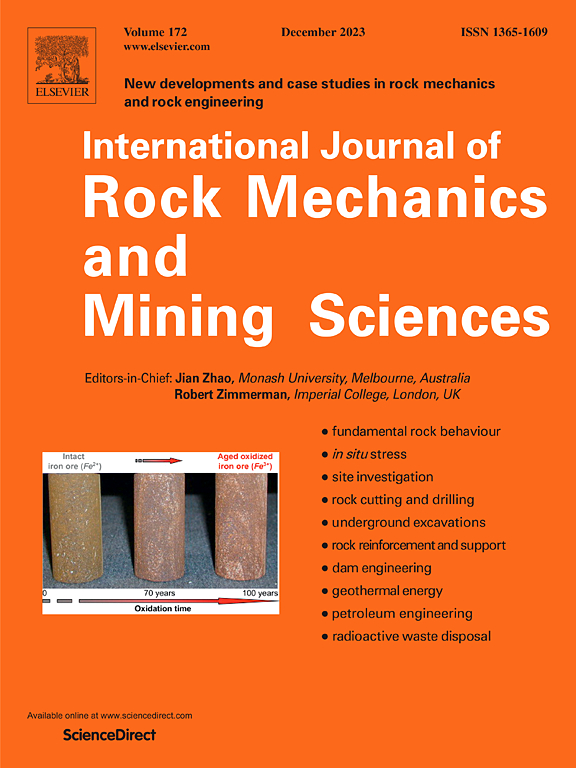Thermally induced fracture modeling during a long-term water injection
IF 7
1区 工程技术
Q1 ENGINEERING, GEOLOGICAL
International Journal of Rock Mechanics and Mining Sciences
Pub Date : 2025-02-01
DOI:10.1016/j.ijrmms.2024.106022
引用次数: 0
Abstract
Significant volumes of water are injected into the subsurface for purposes such as maintaining reservoir pressure, enhancing production efficiency, or water disposal. In these operations, injection pressures are typically kept low to prevent the formation from fracturing. However, fractures may still be induced even at low injection pressures if the injected water cools the formation, causing thermal contraction. In this study, we numerically investigate thermally induced fractures during water injection using a variational thermo-hydro-mechanical phase-field model. Our simulation results show that cold water injection can nucleate multiple thermal fractures nearly orthogonal to a stimulated fracture, even if the injection pressure is below the fracturing pressure. Further simulation scenarios reveal that thermal fracture propagation is more likely with larger temperature differences, smaller in-situ stress anisotropy, and lower formation permeability. This study highlights the significant impact of thermal effects on fracture initiation and propagation, suggesting the need for careful consideration when regulating or managing fracture initiation during water injection.
长期注水过程中的热致裂缝建模
为了维持储层压力、提高生产效率或水处理等目的,大量的水被注入地下。在这些作业中,注入压力通常保持在较低水平,以防止地层破裂。然而,即使在较低的注入压力下,如果注入的水冷却地层,导致热收缩,仍然可能诱发裂缝。在这项研究中,我们使用变分热-水-力学相场模型对注水过程中的热致裂缝进行了数值研究。模拟结果表明,即使注入压力低于压裂压力,冷水注入也能使多条热裂缝与压裂裂缝几乎正交成核。进一步的模拟情景表明,当温差较大、地应力各向异性较小、地层渗透率较低时,热裂缝更容易扩展。该研究强调了热效应对裂缝起裂和扩展的重要影响,表明在注水过程中调节或管理裂缝起裂需要仔细考虑。
本文章由计算机程序翻译,如有差异,请以英文原文为准。
求助全文
约1分钟内获得全文
求助全文
来源期刊
CiteScore
14.00
自引率
5.60%
发文量
196
审稿时长
18 weeks
期刊介绍:
The International Journal of Rock Mechanics and Mining Sciences focuses on original research, new developments, site measurements, and case studies within the fields of rock mechanics and rock engineering. Serving as an international platform, it showcases high-quality papers addressing rock mechanics and the application of its principles and techniques in mining and civil engineering projects situated on or within rock masses. These projects encompass a wide range, including slopes, open-pit mines, quarries, shafts, tunnels, caverns, underground mines, metro systems, dams, hydro-electric stations, geothermal energy, petroleum engineering, and radioactive waste disposal. The journal welcomes submissions on various topics, with particular interest in theoretical advancements, analytical and numerical methods, rock testing, site investigation, and case studies.

 求助内容:
求助内容: 应助结果提醒方式:
应助结果提醒方式:


